In this guide, we’ll explore 10 breathtaking national parks road trips in the Western U.S. that you can embark on this year. We’ll cover the best times to visit, must-see highlights, practical tips, and everything you need to know to plan your perfect adventure. From weekend getaways to epic multi-week journeys, these road trips showcase the incredible diversity and beauty of America’s best idea—its national parks.
1. Yellowstone and Grand Teton National Parks Road Trip
The iconic Grand Prismatic Spring in Yellowstone National Park
Yellowstone, America’s first national park, paired with the dramatic peaks of Grand Teton creates one of the most iconic national parks road trips in the Western U.S. This adventure takes you through two distinct but equally magnificent landscapes in Wyoming, offering incredible wildlife viewing opportunities and some of the most unique geological features on the planet.
In Yellowstone, don’t miss the reliable Old Faithful geyser, the rainbow-colored Grand Prismatic Spring, and the dramatic Grand Canyon of the Yellowstone with its magnificent waterfalls. Wildlife enthusiasts should head to Lamar Valley, often called “America’s Serengeti,” where you might spot bison, elk, wolves, and even grizzly bears. Just a short drive south, Grand Teton National Park offers some of the most photogenic mountain scenery in America, with the jagged Teton Range rising dramatically from the valley floor. The 42-mile Scenic Loop Drive provides stunning views, while Jenny Lake and String Lake offer perfect spots for hiking and photography.
Experience Yellowstone & Grand Teton
Discover the wonders of these iconic parks with expert guides who know the best spots for wildlife viewing and photography.
The best time to visit is late May through September when all roads are typically open. July and August bring crowds but offer the best weather, while June and September provide a better balance of good conditions and fewer people. Entry fees are $35 per vehicle for each park, valid for 7 days, but the America the Beautiful annual pass ($80) covers both parks and is highly recommended for this trip. Make reservations for accommodations inside the parks at least 6-12 months in advance, especially for summer visits.
Need a Vehicle for Your Adventure?
Explore Yellowstone and Grand Teton at your own pace with a reliable rental car.
2. Utah’s Mighty Five National Parks Road Trip
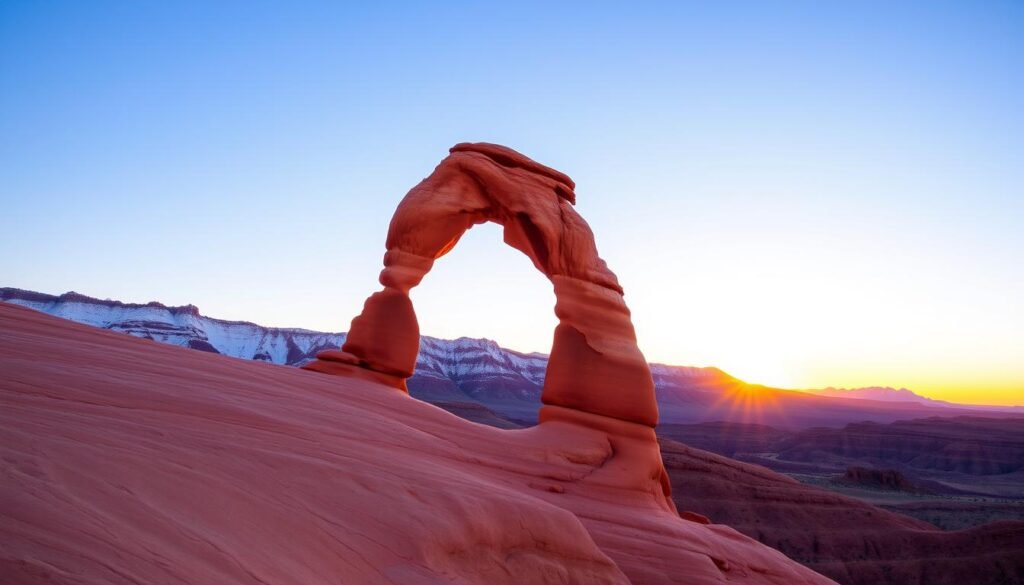
The iconic Delicate Arch in Arches National Park at sunset
Utah’s “Mighty Five” national parks—Arches, Canyonlands, Capitol Reef, Bryce Canyon, and Zion—offer one of the most spectacular national parks road trips in the Western U.S. This journey takes you through a stunning red rock wonderland with otherworldly landscapes that seem to change completely from one park to the next.
Begin your adventure at Arches National Park, home to over 2,000 natural stone arches, including the iconic Delicate Arch. Just a short drive away, Canyonlands presents a vast wilderness of canyons, mesas, and buttes carved by the Colorado River. Continue to Capitol Reef, an often-overlooked gem with colorful cliffs, natural bridges, and historic orchards. Bryce Canyon will leave you speechless with its thousands of delicate hoodoos—spire-shaped rock formations in brilliant orange and red hues. Complete your journey at Zion, where massive canyon walls rise dramatically on either side of the valley floor, offering some of the most challenging and rewarding hikes in the national park system.
Stay Near Utah’s National Parks
Find the perfect base for exploring Utah’s Mighty Five with accommodations ranging from luxury lodges to convenient motels.
Spring (April-May) and fall (September-October) offer the most pleasant temperatures for this road trip. Summer brings intense heat, especially in Arches and Canyonlands, while winter can bring snow at higher elevations like Bryce Canyon. Note that popular hikes like Angels Landing in Zion now require permits, which should be secured well in advance. Timed entry reservations are also required for Arches during peak season. The parks can be connected in a loop starting from Las Vegas or Salt Lake City, making car rental and flight arrangements convenient.
Explore Utah’s Red Rock Country
Discover hidden gems and iconic landmarks with expert local guides who know Utah’s national parks inside and out.
3. Pacific Northwest National Parks Road Trip
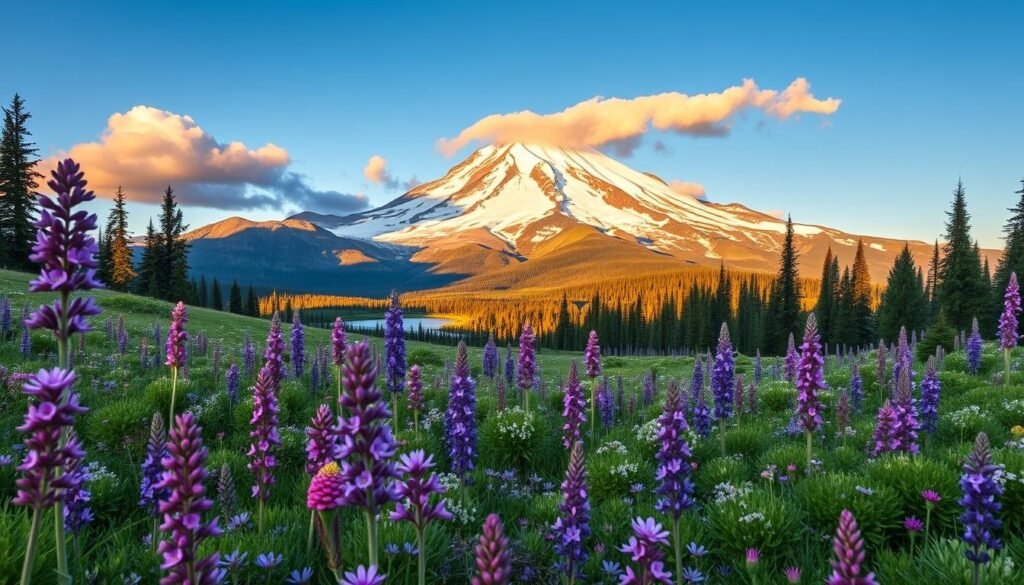
Mount Rainier surrounded by summer wildflowers at Paradise
The Pacific Northwest offers a completely different national parks road trip experience, showcasing the region’s incredible diversity—from rainforests and rugged coastlines to active volcanoes and alpine meadows. This journey through Washington and Oregon connects Olympic, Mount Rainier, and North Cascades National Parks, with an optional extension to Crater Lake in Oregon.
Begin at Olympic National Park, one of the most diverse national parks in the country. Here, you can explore temperate rainforests dripping with moss, hike along wild Pacific beaches, and ascend to alpine meadows—all in one day. Next, head to Mount Rainier National Park, dominated by the 14,410-foot active volcano that gives the park its name. During summer, the Paradise and Sunrise areas explode with colorful wildflower displays against the backdrop of the snow-capped peak. Continue to North Cascades National Park, often called the “American Alps” for its jagged peaks, turquoise lakes, and over 300 glaciers—more than any U.S. park outside Alaska. If time permits, extend your journey south to Crater Lake National Park in Oregon, home to the deepest lake in the United States, formed in the caldera of an ancient volcano.
Perfect Vehicle for Pacific Northwest Exploration
Navigate mountain roads and forest highways with a comfortable, reliable rental car suited for all terrains.
Summer (July-September) is the prime time for this road trip, as mountain roads and trails are typically snow-free, and wildflowers are in bloom. Some park roads, like the North Cascades Highway and Sunrise Road at Mount Rainier, are closed in winter due to heavy snowfall. Be prepared for rapidly changing weather conditions even in summer, and pack layers and rain gear regardless of the forecast. Olympic National Park’s coastal areas can be visited year-round, offering storm-watching opportunities in winter. Entrance fees are $30 per vehicle for each park, valid for 7 days, making the America the Beautiful annual pass a good value for this multi-park trip.
Stay in the Heart of the Pacific Northwest
Find cozy lodges, mountain cabins, and convenient hotels near these magnificent national parks.
4. California National Parks Road Trip
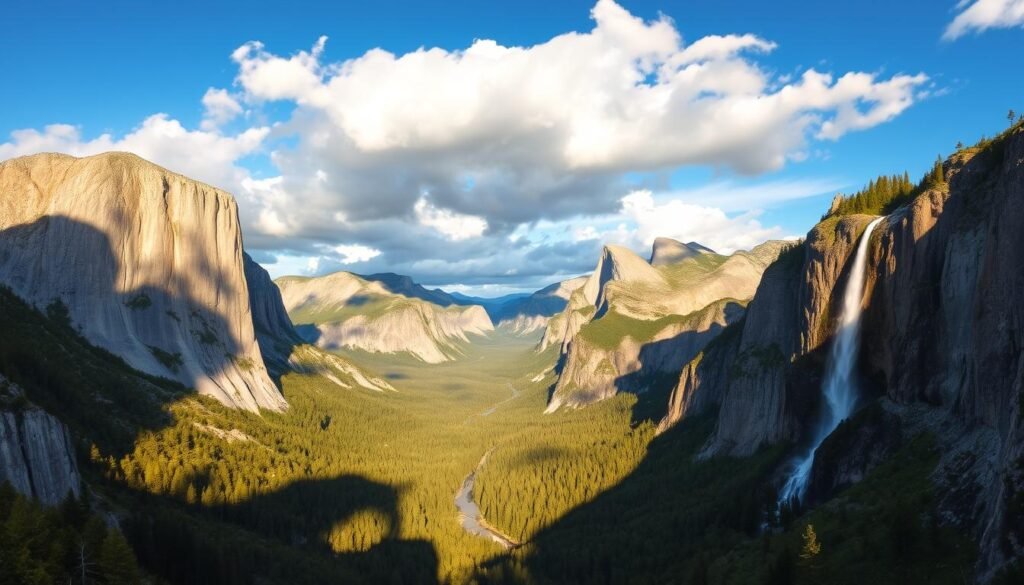
The iconic view of Yosemite Valley with El Capitan and Half Dome
California boasts an incredible diversity of landscapes, and this national parks road trip takes you through some of the state’s most spectacular natural wonders. From the towering sequoias and granite cliffs of the Sierra Nevada to the stark beauty of the desert, this journey showcases California’s remarkable range of ecosystems and scenery.
Start your adventure at Yosemite National Park, where the dramatic valley floor is surrounded by massive granite monoliths like El Capitan and Half Dome. Don’t miss Yosemite Falls, Glacier Point, and the ancient giant sequoias in Mariposa Grove. Head south to Sequoia and Kings Canyon National Parks, home to the world’s largest trees, including the General Sherman Tree. Continue to the otherworldly landscapes of Death Valley National Park, the hottest, driest, and lowest national park in the country, where you’ll find colorful badlands, salt flats, sand dunes, and mountains. Complete your journey at Joshua Tree National Park, where the Mojave and Colorado deserts meet, creating a unique landscape dotted with the distinctive Joshua trees and fascinating rock formations that attract rock climbers from around the world.
Discover California’s Natural Wonders
Experience the magic of California’s diverse national parks with expert guides who know the best trails and viewpoints.
The best time for this road trip depends on which parks you’re visiting. Spring (April-May) is ideal for Yosemite’s waterfalls and Death Valley’s wildflowers. Summer works well for the high-elevation areas of Yosemite and Sequoia but brings extreme heat to Death Valley (best avoided). Fall offers pleasant temperatures in most parks and fewer crowds. Winter brings snow to Yosemite and Sequoia, while Death Valley and Joshua Tree offer comfortable daytime temperatures. Note that Tioga Road in Yosemite is typically closed from November to May due to snow. Reservations are required to enter Yosemite during peak periods, so check the park website for current requirements.
Perfect Base for California Park Exploration
Find comfortable accommodations near California’s magnificent national parks.
5. The Grand Circle Road Trip
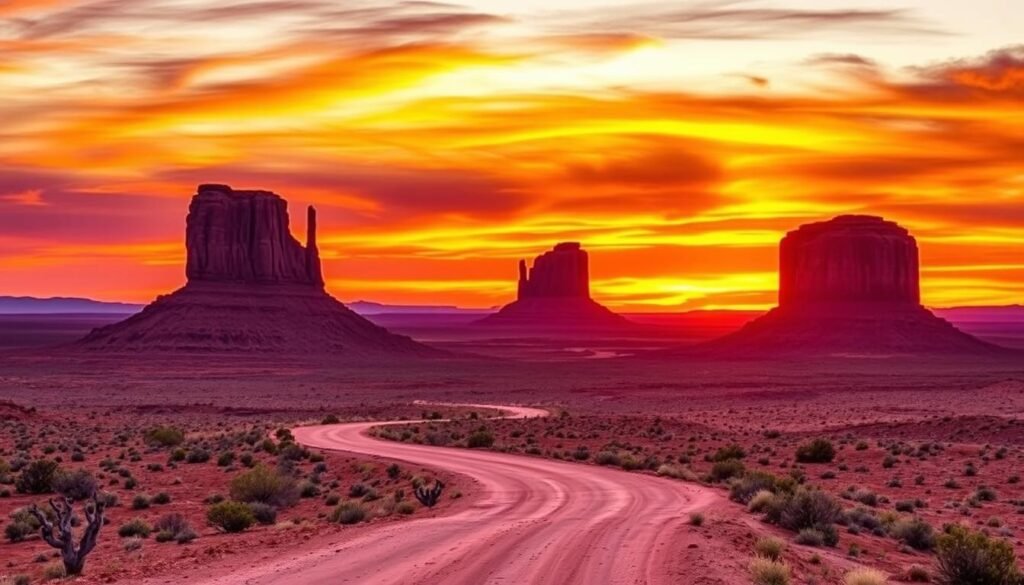
The iconic buttes of Monument Valley at sunset
The Grand Circle Road Trip is the ultimate national parks adventure in the Western U.S., encompassing parts of five states—Arizona, Utah, Colorado, New Mexico, and Nevada. This epic journey connects the Grand Canyon, Zion, Bryce Canyon, Capitol Reef, Arches, Canyonlands, and Mesa Verde National Parks, along with numerous national monuments, tribal parks, and state parks.
Begin your journey at the Grand Canyon, where the Colorado River has carved a massive chasm up to a mile deep and 18 miles wide, revealing two billion years of Earth’s geological history. Continue to the towering sandstone cliffs of Zion and the delicate hoodoos of Bryce Canyon. Explore the ancient cliff dwellings at Mesa Verde, where Ancestral Puebloans built elaborate stone communities in sheltered alcoves. Don’t miss Monument Valley Tribal Park on the Navajo Nation, where iconic sandstone buttes have become symbols of the American West. Other highlights include the natural bridges of Natural Bridges National Monument, the twisting slot canyons of Antelope Canyon, and the horseshoe-shaped meander of the Colorado River at Horseshoe Bend.
Experience Monument Valley & Antelope Canyon
These iconic locations require guided tours with authorized tribal guides. Book in advance to secure your spot!
Spring (April-May) and fall (September-October) offer the most pleasant temperatures for this extensive road trip. Allow at least two weeks to complete the full circuit, though three weeks would provide a more relaxed pace. Be aware that this route traverses tribal lands, including the Navajo Nation, where special permits may be required for certain activities. Places like Antelope Canyon can only be visited with authorized guides. Las Vegas makes an excellent starting and ending point for this loop, with plenty of car rental options available.
Ready for the Ultimate Road Trip?
Get a comfortable, reliable vehicle with unlimited mileage for your Grand Circle adventure.
6. Colorado Rockies National Parks Road Trip
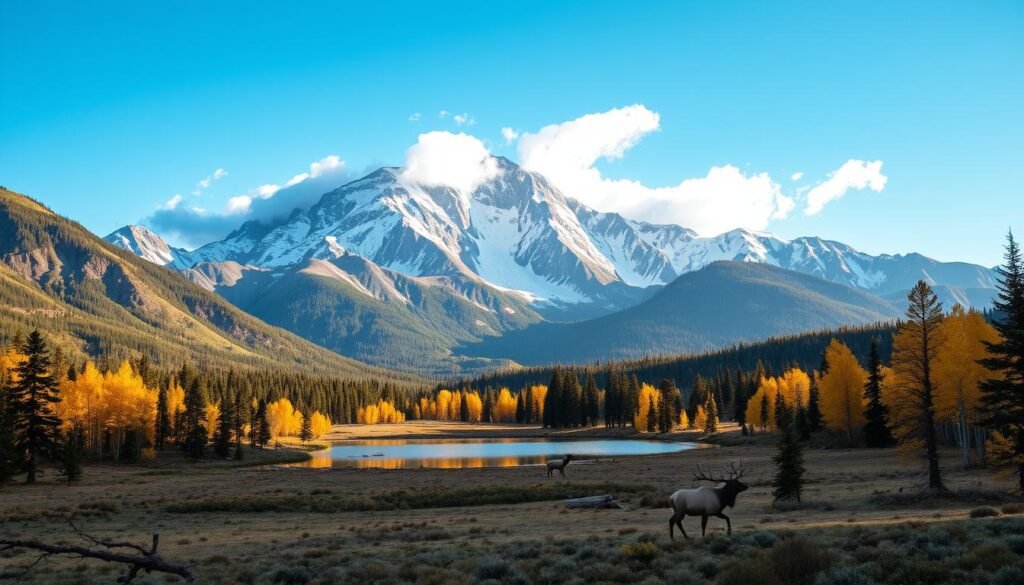
Fall colors and mountain peaks at Rocky Mountain National Park
The Colorado Rockies offer some of the most spectacular mountain scenery in the Western U.S., and this national parks road trip takes you through the heart of the state’s alpine wonderland. The journey connects Rocky Mountain National Park, Black Canyon of the Gunnison National Park, Great Sand Dunes National Park, and Mesa Verde National Park, showcasing Colorado’s remarkable diversity of landscapes.
Begin at Rocky Mountain National Park, where Trail Ridge Road—the highest continuous paved road in the United States—takes you above the treeline to sweeping alpine vistas. Look for elk, bighorn sheep, and marmots as you explore over 300 miles of hiking trails. Continue to Black Canyon of the Gunnison, where the Gunnison River has carved one of the steepest, narrowest, and most dramatic canyons in North America. Next, visit Great Sand Dunes National Park, home to the tallest sand dunes in North America, rising over 750 feet against the backdrop of the Sangre de Cristo Mountains. Complete your journey at Mesa Verde, where you can explore some of the best-preserved Ancestral Puebloan cliff dwellings in the country.
Explore Colorado’s Mountain Wonders
Discover hidden gems and iconic landmarks with expert local guides who know Colorado’s national parks inside and out.
Summer (June-August) offers the best access to high-elevation areas, with wildflowers peaking in July. Fall (September-early October) brings spectacular aspen colors and elk rutting season in Rocky Mountain National Park. Note that timed entry permits are required for Rocky Mountain National Park during peak season. Trail Ridge Road is typically open from late May to mid-October, weather permitting. At Great Sand Dunes, spring brings the seasonal Medano Creek, creating a beach-like environment at the base of the dunes. Denver makes an excellent starting point for this loop, with easy access to Rocky Mountain National Park.
Stay in Colorado’s Mountain Towns
Find charming accommodations in Estes Park, Gunnison, Alamosa, and Durango—perfect bases for exploring Colorado’s national parks.
7. Northern Arizona National Parks Road Trip
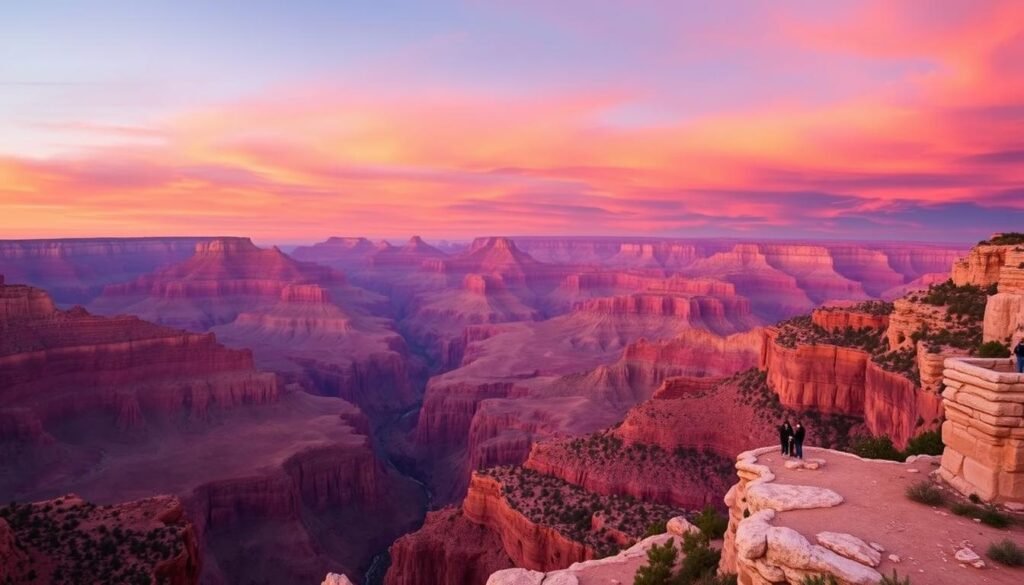
Sunset view from the South Rim of the Grand Canyon
Northern Arizona offers an incredible concentration of natural wonders, making it perfect for a focused national parks road trip in the Western U.S. This journey centers around the Grand Canyon but also includes Petrified Forest National Park, with side trips to Monument Valley Tribal Park, Antelope Canyon, Horseshoe Bend, and several national monuments.
The Grand Canyon is the undisputed highlight, where you can explore both the popular South Rim and the less-visited North Rim (open mid-May to mid-October). At Petrified Forest National Park, marvel at the colorful petrified wood scattered across the landscape and the painted badlands of the Chinle Formation. Don’t miss the opportunity to visit Antelope Canyon, where sunbeams create magical light shows in narrow slot canyons, and Horseshoe Bend, where the Colorado River makes a dramatic 270-degree turn. Other worthwhile stops include Sunset Crater Volcano National Monument, Wupatki National Monument with its ancient pueblos, and Walnut Canyon National Monument, where cliff dwellings are tucked into a picturesque canyon.
Experience the Grand Canyon & Antelope Canyon
Maximize your time with expert guides who know the best viewpoints and photo opportunities.
Spring (April-May) and fall (September-October) offer the most pleasant temperatures and smaller crowds. Summer brings heat and the largest crowds, especially at the Grand Canyon, but it’s the only time when both rims of the Grand Canyon are open simultaneously. Remember that Antelope Canyon can only be visited with an authorized Navajo guide, and tours often sell out months in advance during peak season. Flagstaff makes an excellent base for exploring many of these destinations, with accommodations ranging from budget-friendly motels to upscale lodges.
Perfect Vehicle for Desert Exploration
Navigate Arizona’s scenic highways and desert roads with a comfortable, reliable rental car.
8. Olympic Peninsula National Parks Road Trip
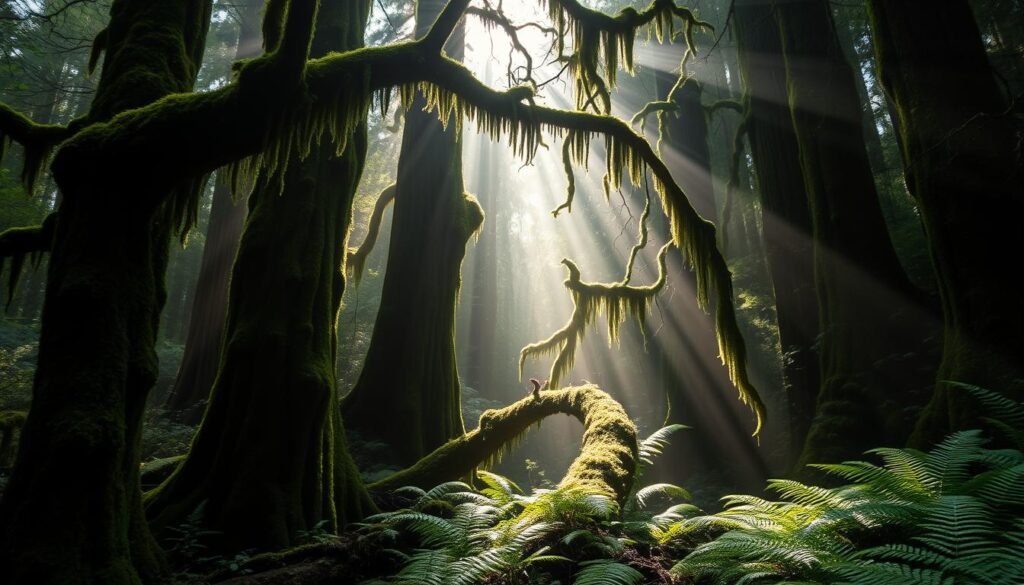
The mystical Hoh Rainforest in Olympic National Park
The Olympic Peninsula offers one of the most diverse national parks road trips in the Western U.S., all within a relatively compact area. This journey circles Olympic National Park, which encompasses nearly a million acres of protected wilderness, including glacier-capped mountains, old-growth temperate rainforests, and 73 miles of wild Pacific coastline.
Begin your adventure in Port Angeles, the gateway to Hurricane Ridge, where panoramic views of the Olympic Mountains and the Strait of Juan de Fuca await. Continue to the Hoh Rain Forest, one of the finest remaining examples of temperate rainforest in the United States, where moss-draped trees create an enchanted atmosphere. Explore the wild beaches along the Pacific coast, including Ruby Beach with its sea stacks and driftwood, and Rialto Beach with the famous Hole-in-the-Wall formation. Don’t miss Sol Duc Valley with its hot springs and waterfall, Lake Crescent with its crystal-clear waters, and the Quinault Rain Forest with some of the largest trees in the region. The 101 Loop Road circles the park, providing access to most major attractions.
Stay Near Olympic National Park
Find comfortable accommodations in Port Angeles, Forks, or Lake Quinault—perfect bases for exploring the Olympic Peninsula.
Summer (July-September) offers the driest weather and best access to high-elevation areas like Hurricane Ridge. Spring brings vibrant wildflowers and powerful waterfalls, while fall offers fewer crowds and beautiful colors. Winter limits access to some areas but provides a unique opportunity to experience the rainforests during their wettest, most atmospheric season. Be prepared for rain at any time of year, especially in the rainforest areas that receive up to 14 feet of precipitation annually. Seattle makes an excellent starting point for this loop, with ferry options that can add another dimension to your journey.
Discover Olympic’s Diverse Ecosystems
Experience the mountains, rainforests, and coastlines with knowledgeable guides who can enhance your understanding of this unique environment.
9. Southwest Desert National Parks Road Trip
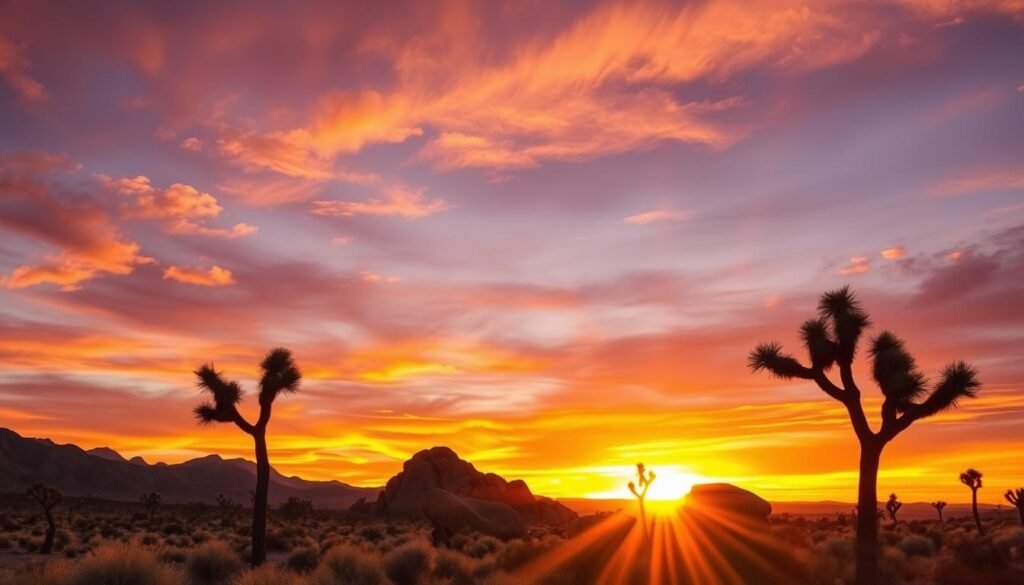
Joshua Tree National Park’s distinctive landscape at sunset
The deserts of the Southwest offer some of the most otherworldly landscapes in the Western U.S., and this national parks road trip takes you through a fascinating world of unique geological formations, ancient cultural sites, and surprising biodiversity. The journey connects Death Valley, Joshua Tree, and Saguaro National Parks, with options to include Great Basin National Park and several national monuments.
Begin at Death Valley, the hottest, driest, and lowest national park in the country, where you’ll find colorful badlands, vast salt flats, sand dunes, and mountains. Don’t miss Badwater Basin (282 feet below sea level), the colorful Artist’s Palette, Zabriskie Point, and Mesquite Flat Sand Dunes. Continue to Joshua Tree, where the Mojave and Colorado deserts meet, creating a unique landscape dotted with the distinctive Joshua trees and fascinating rock formations. Complete your journey at Saguaro National Park near Tucson, home to the nation’s largest cacti—the iconic saguaro—some reaching heights of 50 feet and ages of 200 years. Optional additions include Great Basin National Park in Nevada with its ancient bristlecone pines and Lehman Caves, and Mojave National Preserve with its massive Kelso Dunes.
Perfect Vehicle for Desert Exploration
Navigate desert roads with a comfortable, reliable rental car with good air conditioning.
Fall through spring (October-April) is the ideal time for this desert road trip, as summer brings extreme heat, especially in Death Valley where temperatures regularly exceed 120°F. Winter offers mild daytime temperatures perfect for hiking, though nights can be cold. Spring brings the possibility of wildflower blooms, particularly spectacular during “super bloom” years. Carry plenty of water, as desert conditions can be deceptively dehydrating. Las Vegas makes an excellent starting point for this loop, with easy access to Death Valley.
Desert Accommodations
Find unique lodging options from historic inns in Death Valley to desert retreats near Joshua Tree.
10. Cascade Volcanoes National Parks Road Trip
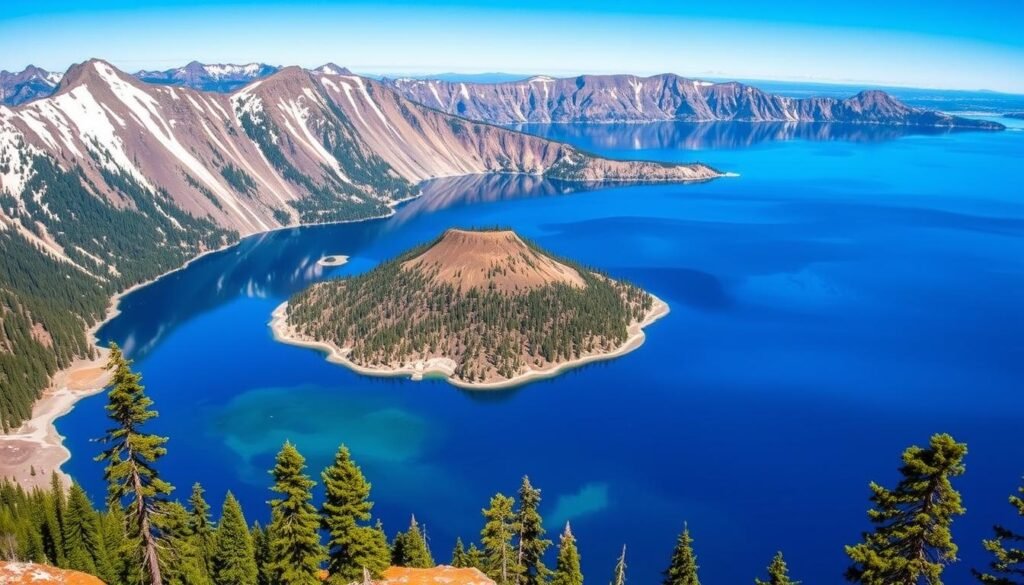
The deep blue waters of Crater Lake with Wizard Island
The Cascade Range is home to a string of volcanoes that have shaped the landscape of the Pacific Northwest, and this national parks road trip takes you to some of the most spectacular volcanic features in the Western U.S. The journey connects Lassen Volcanic, Crater Lake, and Mount Rainier National Parks, with options to include Mount St. Helens National Volcanic Monument.
Begin at Lassen Volcanic National Park in northern California, home to all four types of volcanoes found in the world—shield, composite, cinder cone, and plug dome. Explore the geothermal areas with their bubbling mud pots, steam vents, and hot springs. Continue north to Crater Lake National Park in Oregon, where the collapse of Mount Mazama about 7,700 years ago created the deepest lake in the United States, known for its intense blue color. The 33-mile Rim Drive offers spectacular views from different angles. Complete your journey at Mount Rainier National Park in Washington, dominated by the 14,410-foot active volcano that gives the park its name. Don’t miss the wildflower meadows at Paradise and Sunrise during summer. A worthwhile detour is Mount St. Helens National Volcanic Monument, where you can witness the ongoing recovery from the massive 1980 eruption.
Explore the Cascade Volcanoes
Discover the fascinating geology and spectacular landscapes with expert guides who can explain the volcanic history of the region.
Summer (July-September) is the prime time for this road trip, as mountain roads are typically snow-free, and wildflowers are in bloom. Crater Lake’s Rim Drive is usually only fully open from July to October. Lassen’s main park road typically opens in June but can vary depending on snow conditions. Be prepared for rapidly changing weather conditions even in summer, and pack layers regardless of the forecast. Portland or Seattle makes an excellent starting or ending point for this journey, with plenty of car rental options available.
Stay Near Volcanic Wonders
Find comfortable accommodations near these magnificent national parks, from historic lodges to convenient hotels.
Planning Your National Parks Road Trip in the Western U.S.
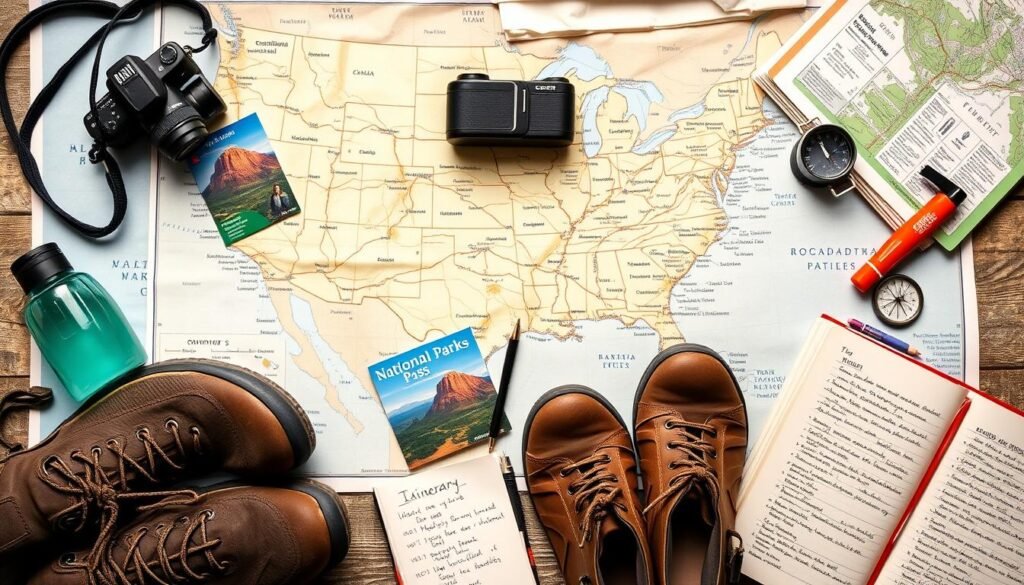
Essential planning materials for your national parks adventure
Best Times to Visit Western National Parks
Timing is crucial when planning national parks road trips in the Western U.S. Summer (June-August) offers the most reliable weather and full access to facilities and roads, but also brings the largest crowds. Spring (April-May) and fall (September-October) provide a better balance of good weather and smaller crowds, though some high-elevation areas may still be snow-covered. Winter offers a unique perspective with fewer visitors, but many roads and facilities are closed, particularly in mountain parks.
Essential Passes and Permits
The America the Beautiful Annual Pass ($80) is a must-have for any multi-park road trip, covering entrance fees to all national parks and federal recreation sites for a full year. Some popular hikes and attractions require additional permits, such as Angels Landing in Zion, Half Dome in Yosemite, and The Wave in Vermilion Cliffs National Monument. These competitive permits should be secured months in advance when possible. Several parks, including Yosemite, Rocky Mountain, and Arches, have implemented timed entry systems during peak periods, requiring advance reservations.
Ready for Your National Parks Adventure?
Find the perfect vehicle for your road trip with unlimited mileage and flexible pickup/drop-off options.
Accommodation Strategies
Lodging inside national parks offers unparalleled convenience and atmosphere but typically requires reservations 6-12 months in advance, especially for summer visits. Gateway communities near park entrances provide more options at various price points. For more flexibility, consider camping—both developed campgrounds and dispersed camping on public lands (where permitted). Many campgrounds accept reservations through Recreation.gov, while others operate on a first-come, first-served basis.
Book Your National Parks Accommodations
From historic park lodges to convenient hotels in gateway communities, find the perfect base for your adventures.
Multi-Park Itinerary Tips
When planning a multi-park road trip, allow at least 2-3 days for larger parks like Yellowstone, Yosemite, and Grand Canyon, and 1-2 days for smaller parks. Build in buffer days for weather delays, unexpected discoveries, or simply to rest. Consider the driving distances between parks—in the vast landscapes of the West, parks that look close on a map may be several hours apart. Rather than trying to see everything, focus on quality experiences in fewer locations. Remember that national monuments, state parks, and other protected areas often offer equally impressive scenery with fewer crowds.
Embrace the Journey: Your Western U.S. National Parks Adventure Awaits
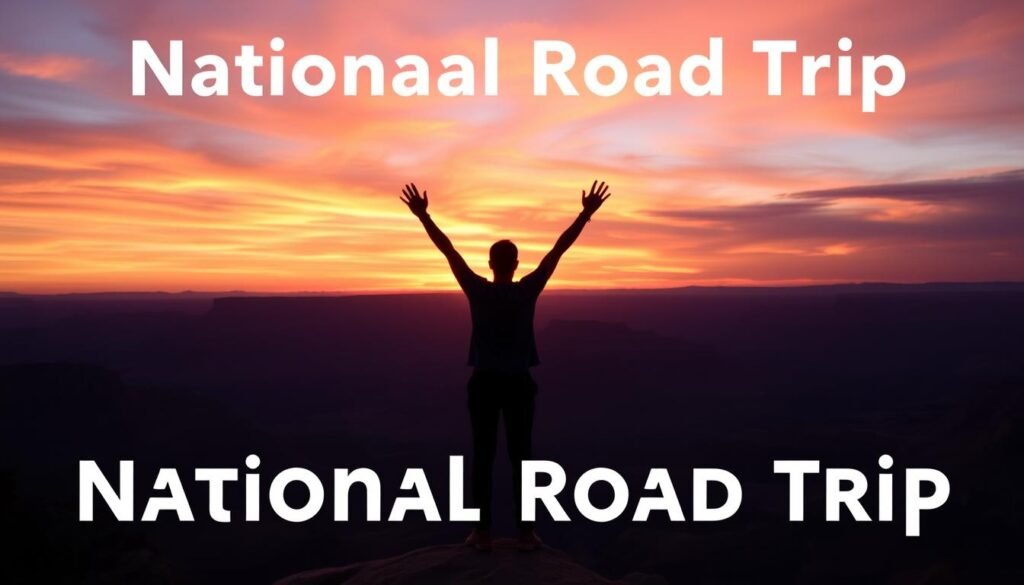
The reward of a national parks road trip: unforgettable moments in nature
The national parks of the Western United States offer some of the most spectacular landscapes on the planet, and a road trip is the perfect way to experience their grandeur and diversity. Whether you choose the volcanic wonders of the Cascades, the red rock country of Utah, the alpine splendor of the Rockies, or any of the other incredible routes we’ve explored, you’re in for an unforgettable adventure.
Remember that the journey itself is as important as the destinations. Take time to explore the small towns, scenic byways, and unexpected discoveries along the way. Be flexible with your plans, respect the natural environment and cultural heritage of the places you visit, and embrace the transformative power of these protected landscapes. The memories you create on these national parks road trips in the Western U.S. will last a lifetime.
Start Planning Your National Parks Adventure Today
From booking accommodations to finding the perfect guided tours, everything you need is just a click away.
Which national parks road trip in the Western U.S. will you choose for your next adventure? Share your plans or past experiences in the comments below!